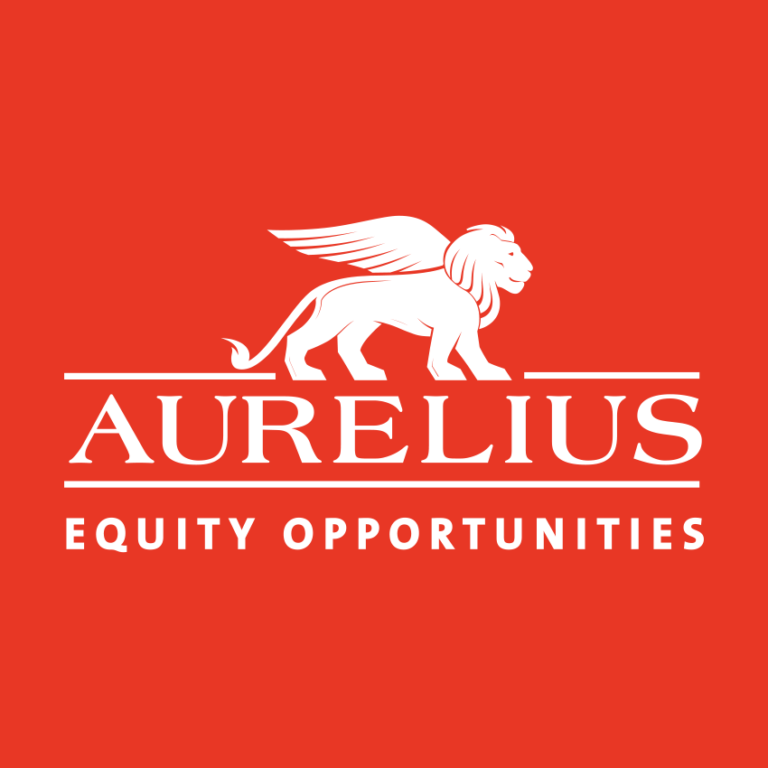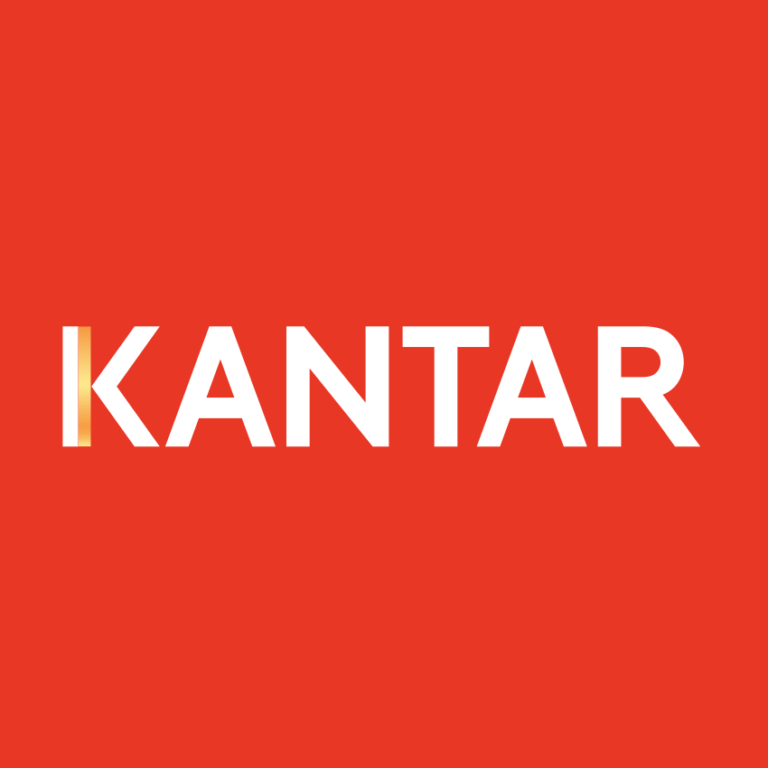
HR Strategy
HR strategy: your organisation's guide towards growth, engagement and success. In this straightforward guide, we'll break down what HR strategy is, why it's important and how it's put into action. We'll also look at different types of HR strategies, and show you real-world examples of how they work. From recruitment to retention, training to talent management, let us illuminate the path towards a robust, effective HR strategy that aligns perfectly with your business objectives and propels your team towards new heights.
Darren Tolhurst
Welcome, leaders of innovation and growth! Picture your organisation as a mighty structure you’re crafting. It’s an architectural marvel, a symbol of progress and innovation. Now, your employees? They’re the bricks, the steel, the glass – unique materials you’ve picked with precision. Your HR strategy? That’s the crucial blueprint, the design you follow to ensure each piece contributes to a grand masterpiece.
Just as architects can’t construct a building without a detailed blueprint, you can’t nurture your organisation without a solid HR strategy. It guides you, helping you place every ‘brick’ (employee) correctly, ensuring your ‘building’ (company) stands strong and proud.
Whether you’re designing a sleek skyscraper or a cosy community space, the architecture varies, much like our HR strategies. Throughout our journey today, we’ll explore how to draft the perfect blueprint for your architectural masterpiece – an HR strategy that supports and enhances your unique organisation. So let’s roll up our sleeves and start building!
Want help with HR StRATEGY?
Struggling with HR Challenges? Don’t Wait – move forward your strategy today with a free consultation with a trusted member of our HR leadership community

What is HR Strategy?
An HR strategy is a company’s plan for managing its human resources in a way that supports its business goals. It covers elements like recruitment, retention, training, and employee wellness, aiming to optimize the workforce for maximum productivity and engagement. For example, a multigenerational workforce strategy.

Human Resource strategy explained
While there isn’t a singular, authoritative definition of HR strategy due to variations in context and interpretation, the Chartered Institute of Personnel and Development (CIPD*), a respected professional body for HR and people development, provides a comprehensive definition:
“HR strategies set out what the organization intends to do about its human resource management policies and practices, and how they should be integrated with the business strategy and each other.”
This definition emphasizes the strategic alignment of HR practices with overall business goals, which is a key concept in HR strategy. It also underscores the interconnected nature of different HR policies and practices within the strategy.
Why is HR strategy important?
HR strategy is important to all organisations because it provides the blueprint for managing the most valuable asset of a business – its people. A well-crafted HR strategy aligns the workforce with the company’s overarching objectives, ensuring that every individual’s effort contributes to business growth and success. It also guides effective recruitment, development, and retention of talent, which can offer a significant competitive edge. HR strategy helps in managing costs efficiently, predicting staffing needs accurately, and complying with labour laws, thus mitigating potential risks. In essence, without a strategic approach to human resources, businesses risk underutilising their workforce, misaligning their actions with their goals, and even facing legal complications, all of which could obstruct their path to success.
Benefits of strategic human resources planning
The benefits of strategic human resources planning to a business lie in its direct influence on the organisation’s ability to achieve its objectives. Here’s why:
- Business Growth and Success: Efficient recruitment, retention, and development of employees directly contribute to the growth and success of a business. With a strategic approach, businesses can ensure they have the right people in the right roles to drive success.
- Competitive Advantage: A well-planned HR strategy can lead to a more skilled, motivated, and engaged workforce. This can be a significant competitive advantage, as employees are often a company’s most valuable resource.
- Cost Management: Effective HR planning helps businesses better manage costs. By predicting staffing needs and labour market trends, companies can avoid the financial strain of overstaffing or the productivity losses of understaffing.
- Risk Mitigation: HR planning helps businesses stay compliant with labour laws and regulations, reducing the risk of legal problems. It also helps identify and manage other potential HR-related risks, such as those related to employee performance or retention.
- Business Strategy Alignment: HR planning ensures that the human resources strategy supports the broader business strategy. This alignment is crucial for ensuring all parts of the organisation are working together effectively towards common objectives.
HR strategy example
Google’s HR Strategy
This HR strategy aligns with Google’s overall business strategy of driving innovation, maintaining a competitive edge, and being a top player in the tech industry. It provides a comprehensive approach to managing Google’s human resources in a way that supports these goals.
- Recruitment and Selection: Google is known for its highly selective and rigorous recruitment process. They seek out individuals who are not only exceptionally talented but who also fit well with their company culture (a characteristic they call “Googliness”). This approach supports their strategy of having top-notch, innovative thinkers who can drive the company’s growth and maintain its competitive edge.
- Employee Development and Training: Google invests heavily in the development and training of its employees. They have numerous programs, like “Google’s Engineering Education”, which offer technical training, leadership development, and new skills learning to employees. This supports their strategy of continuous innovation and maintaining a highly skilled workforce.
- Performance Management: Google utilizes a performance management system known as “Objectives and Key Results” (OKRs), where employees set ambitious, measurable goals and outcomes for themselves. This aligns with their strategy of encouraging innovation, high performance, and accountability.
- Employee Engagement and Wellness: Google prioritizes employee well-being and work-life balance. They offer numerous benefits like health and wellness programs, on-site amenities like gyms and cafes, flexible work hours, and generous maternity and paternity leaves. This aligns with their strategy to attract and retain top talent by maintaining high employee satisfaction and engagement levels.
- Innovation and Open Culture: Google encourages a culture of openness and innovation. They have a program called “20% Time” where employees can spend 20% of their time working on any pet project they want. Many of Google’s products, like Gmail and AdSense, came from this program. This supports Google’s overall business strategy of being a leading innovator in the tech industry.
HR Strategies
There are a number of different ways of categorising HR strategies but most fall into one of these categories:
- Universalistic HR Strategy: This strategy adopts a ‘best practice’ approach, implying that there are certain human resource practices superior to others and can be applied universally across all organisations to increase performance. These practices may include extensive training, performance-based compensation and internal promotions.
- Contingency or Fit HR Strategy: This strategy stresses that HR policies and practices must align, or ‘fit’, with various aspects of the organisation, such as its size, structure, strategy and market conditions. This can be further split into:
- Vertical fit, which is the alignment between the organisation’s business strategy and its HR strategy. For instance, a company with a business strategy focused on innovation might adopt an HR strategy that emphasises skills development, creativity, and knowledge sharing.
- Horizontal fit refers to the alignment of various HR practices with each other. For instance, an organisation’s recruitment policies should align with its training and development programmes, performance management systems, and compensation strategies to ensure a cohesive approach to managing human resources.
- Configurational HR Strategy: This approach attempts to create a synergy among HR practices, employees’ skills, and the strategic goals of the organisation. It emphasises achieving optimal performance by creating a complete system where HR practices, individual behaviours, and business strategies align and complement each other.
- Resource-Based HR Strategy: This strategy treats human capital as a strategic resource that provides a competitive advantage. It focuses on recruiting, developing, and retaining high-quality employees, and creating organisational design and systems that maximise their productivity and commitment.
The most suitable type of HR strategy for an organisation will depend on various factors, including its industry, size, goals, culture, and the specific challenges it faces in managing its human resources.
HR Strategy examples
Examples of organisations that have adopted the different types of HR strategies.
- Universalistic HR Strategy: Companies that adhere to the belief of “best practices” can be found across industries. For example, Procter & Gamble (P&G) is well known for developing their leaders from within the company, offering a wide range of development programmes for new hires to develop into future leaders. This internal promotion practice is considered one of the universal “best practices”.
- Contingency or Fit HR Strategy: An example of a company that utilises a fit HR strategy is Southwest Airlines. They’re known for their low-cost, high customer service approach to air travel. Their HR practices are aligned to support this, with a strong emphasis on hiring for attitude and cultural fit (vertical fit) and ensuring their various HR practices such as recruitment, training, and rewards align with each other (horizontal fit).
- Configurational HR Strategy: Toyota is an example of a company that utilises a configurational HR strategy. Toyota’s Production System (TPS), also known as lean manufacturing, relies heavily on each employee’s skills and commitment. Their HR practices are carefully designed and coordinated to recruit, develop, and engage employees who can thrive in and sustain the TPS.
- Resource-Based HR Strategy: Google utilises a resource-based HR strategy, viewing its employees as a primary source of competitive advantage. They invest heavily in recruiting, developing, and retaining top talent, with a wide range of benefits and resources to encourage innovation and maintain high levels of employee satisfaction.
Please note that most organisations will likely use a combination of the strategies and these examples demonstrate the dominant strategy but it doesn’t exclude the usage of others.
HR Strategy That Moves the Needle
Let’s build an HR Strategy that moves the needle! Book your consultation today.

How to create a human resource strategy
Creating a human resource strategy involves several steps. Here’s a simple breakdown:
- Understand Your Business Goals: What is your organisation aiming to achieve? You need to clearly define your business objectives first.
- Analyse Your Workforce: Look at your current employees. What skills and talents do they have? Where are there gaps that need to be filled?
- Forecast Future HR Needs: Consider your future workforce needs. What type of talent and skills will your company require to achieve its goals?
- Create HR Policies and Practices: Develop HR practices and policies that align with your business objectives. This could include recruitment strategies, training and development programmes, performance management systems, and more.
- Implement Your HR Strategy: Now it’s time to put your strategy into action. This might involve hiring new staff, implementing training programmes, or updating your performance appraisal process.
- Monitor and Adjust: Regularly review your strategy. Is it working? Don’t be afraid to make adjustments as needed.
Remember, an effective HR strategy aligns your workforce with your business goals, ensuring your team is equipped to drive your organisation forward. It’s not a one-time event, but rather a dynamic process that requires continuous review and adjustment. That said, many organisations see the benefit in using a HR consultancy to support the creation of their new strategy, particularly at times of transformation and great upheaval.
Components of a good HR strategy
A well-crafted HR strategy contains several key components. Here they are:
- Alignment with Business Goals: The HR strategy should be directly aligned with the overall objectives of the business. It should support and facilitate the achievement of these goals.
- Workforce Planning: This involves assessing the current skills and capabilities within the organisation, and forecasting future talent needs based on business goals.
- Talent Acquisition and Retention: The strategy should detail how the organisation will attract, recruit, and retain the right talent. This may include elements such as sourcing strategies, recruitment processes, and employee retention initiatives.
- Learning and Development: The strategy should outline how the organisation will support ongoing employee development. This could involve training programmes, career development paths, and opportunities for professional growth.
- Performance Management: The HR strategy should explain how employee performance will be measured, managed, and rewarded. This could include performance appraisal methods, feedback systems, and reward and recognition programmes.
- Employee Engagement and Wellbeing: The HR strategy should also focus on how the organisation will foster a positive, engaging, and healthy work environment. This could include employee engagement initiatives, wellbeing programmes, and a focus on diversity and inclusion.
- HR Policies and Procedures: The strategy should define the policies and procedures that will guide HR operations. This ensures consistency, fairness, and compliance with legal requirements.
- Metrics and Evaluation: Lastly, a good HR strategy should define how success will be measured and evaluated. This should involve HR metrics that align with business objectives, and a process for regularly reviewing and adjusting the strategy.
These components collectively form a comprehensive HR strategy, providing a roadmap for managing human resources in a way that supports the organisation’s goals.
HR strategy template
Here are some simplified templates for each of the different types of HR strategy:
Universalistic HR Strategy Template
- Define the ‘best practices’ you intend to implement (e.g., performance-based rewards, training and development, promoting from within)
- Describe how these practices will be executed
- Set clear objectives for each practice
- Outline how each practice will be measured and assessed for effectiveness
Contingency or Fit HR Strategy Template:
- Define your business strategy and key organisational attributes (e.g., size, industry, structure)
- Identify the HR policies and practices needed to support these attributes and strategy (vertical fit)
- Assess the alignment between various HR practices (horizontal fit) and make adjustments where necessary
- Set clear objectives for each policy and practice
- Outline how the ‘fit’ between the HR strategy and business strategy will be measured and assessed
Configurational HR Strategy Template:
- Identify the strategic goals of your organisation
- Define the HR practices needed to support these goals, and how they interact to form a cohesive system
- Set clear objectives for each practice, ensuring that they complement each other and the strategic goals
- Describe how the synergy between the HR practices and strategic goals will be measured and assessed
Resource-Based HR Strategy Template:
- Identify the human resources (skills, knowledge, abilities) that provide a competitive advantage for your organisation
- Define the HR practices needed to recruit, develop, and retain these resources (e.g., selective hiring, training and development, employee engagement)
- Set clear objectives for each practice
- Describe how the contribution of human resources to the organisation’s competitive advantage will be measured and assessed
Implementation best practice for HR strategy
Implementing an HR strategy effectively involves a few key best practices. Let’s discuss them:
- Engage Leadership: Get the buy-in from senior management. It’s crucial that leaders support the HR strategy and understand its value. They play a significant role in championing the strategy and driving its implementation.
- Communication is Key: Communicate the strategy throughout the organisation. Make sure everyone understands what the strategy is, why it’s important, and how it will be implemented.
- Training and Support: Provide training and resources needed to implement the strategy. This might include training managers on new HR policies or providing resources to help employees understand changes.
- Monitor Progress: Implement systems to track and monitor the strategy’s progress. This could include regular check-ins or a dashboard that tracks key performance indicators (KPIs).
- Adjust and Adapt: Be prepared to adjust your strategy as needed. It’s important to respond to feedback and make changes if something isn’t working.
Remember, the key to successful implementation is communication and engagement from everyone in the organisation. An effective HR strategy is one that’s understood and supported by all.
FAQ
Answers to popular HR strategy questions.
What are the 5 HR Strategies?
The 5 HR Strategies are Universalistic, two types of Contingency (vertical fit and horizontal fit), Configurational and Resource-based. The best type for your organisation will depend on your goals, industry, culture and specific challenges.
What is a short term HR strategy?
A short-term HR strategy is a set of human resources objectives and actions aimed at being executed and accomplished within a short timeframe, typically within a year. These strategies often address the immediate needs of the organisation, such as urgent hiring to fill vacancies, swift skills training for upcoming projects, or enhancing employee engagement following a recent survey. Despite being short-term, these strategies should align with the company’s long-term goals and often serve as stepping stones towards broader, long-term HR objectives.
What should a HR strategy include?
A HR strategy should include alignment with your business’s goals, workforce planning, talent acquisition and retention, learning and development, performance management, employee engagement and wellbeing, policies and procedures as well as metrics for evaluating its success. Collectively these ingredients form a comprehensive HR strategy and road map for managing human resources.
What are the types of HR strategy?
There are several types of HR strategies, each addressing different aspects of human resources management. Common ones include:
Talent Acquisition Strategy: This strategy aims to attract and recruit high-quality candidates that fit the organisation’s needs.
Learning and Development Strategy: This focuses on enhancing employees’ skills and knowledge through activities like training, workshops, and mentoring.
Retention Strategy: This strategy aims to keep valuable employees within the organisation, using methods such as competitive compensation, recognition programmes, and clear career progression paths.
Performance Management Strategy: This involves managing and rewarding employee performance, often through setting clear expectations and regular feedback.
Workforce Planning Strategy: This strategy involves analysing the current workforce and forecasting future HR needs to ensure the organisation has the right people in the right roles at the right time.
Each type of HR strategy serves different purposes but should work in concert to support the overall business goals and objectives.
What are the three pillars of HR strategy?
The three pillars of HR strategy refers to David Ulrich’s three box model of HR strategy. This includes “HR Shared Services” for basic needs, “HR Business Partnering” for providing higher value consultancy to business unit leaders and a “Center of Excellence£ consisting of small teams of experts possessing specialized knowledge to create and implement best practices. Alternatives for the “Three pillars of HR strategy” are available and a number of HR consultancies and authorities list their own three pillars. These include “Organisational Design“, “Resourcing and Talent Planning” and “Learning and Development”. Others cite the pillars to be Strategic Planning, Workforce Development and Performance Management. Still others choose “Onboarding and Foundations”, “Growth and Empowerment” and “Offboarding and Exiting”.
What are strategic HR functions?
Strategic HR functions are the key areas of human resources that align with and contribute to the achievement of organisational goals. These typically include:
Workforce Planning: This involves analysing the current workforce, predicting future HR needs, and developing strategies to meet these needs.
Talent Management: This function includes attracting, recruiting, developing, and retaining the talent necessary for the organisation’s success.
Learning and Development: Here, the focus is on providing employees with opportunities to acquire new skills and knowledge, enabling them to contribute effectively to the organisation and adapt to changes.
Performance Management: This involves establishing performance standards, providing regular feedback, and rewarding performance that meets or exceeds these standards.
Organisational Development: This function includes fostering a positive organisational culture, promoting employee engagement, and managing change within the organisation.
Compensation and Benefits: This involves designing competitive compensation and benefits packages that attract and retain top talent while aligning with the organisation’s budget and financial objectives.
Compliance Management: This function ensures the organisation adheres to all relevant employment laws and regulations, minimising legal risks.
Each of these functions plays a crucial role in aligning the organisation’s human resources with its strategic goals, ensuring the right people and skills are in place to drive success.
How do you develop a strategic HR plan?
Developing a strategic HR plan involves a series of steps designed to align the workforce with your organisation’s goals. Here’s a brief guide:
Understand Business Objectives: Understand what your organisation is aiming to achieve. Your HR strategy should align with these goals.
Conduct a Workforce Analysis: Analyse your current workforce. Understand the skills, capabilities, and areas of improvement that exist within your employees.
Forecast Future HR Needs: Based on your business goals, forecast what skills and positions you’ll need in the future. This involves predicting both the number and types of employees needed.
Develop HR Initiatives: Create HR initiatives to address the needs identified. This may involve strategies for recruiting, training, performance management, and employee retention.
Implement the Plan: Put your HR plan into action. This might involve hiring new staff, developing training programmes, or updating performance appraisal systems.
Monitor and Evaluate: Continually assess the effectiveness of your HR strategy. Are you achieving your goals? Use metrics and feedback to make any necessary adjustments.
Remember, a strategic HR plan is not static. It should evolve with your organisation, helping you to effectively manage your human resources and achieve your business objectives.
Get Support for HR Strategy
Make contact today. All discussions in confidence.

Natalie Allen
Client Engagement Partner





